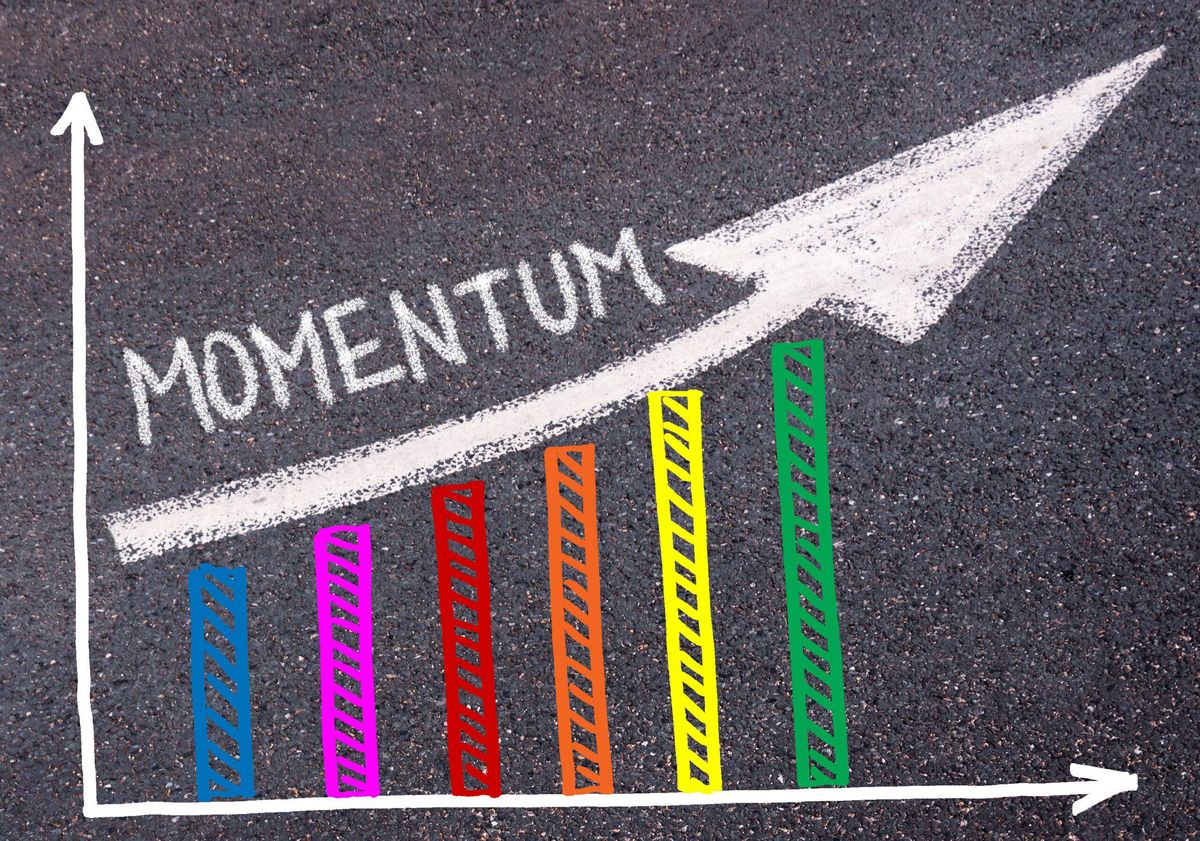Market Momentum What It Means and How It Works

Market Momentum: What It Means and How It Works
What Is Market Momentum?
Momentum is the rate of acceleration of a security’s price—that is, the speed at which the price is changing. Market momentum refers to the aggregate rate of acceleration for the broader market.
Market momentum can be used as a measure of overall market sentiment that can support buying and selling with and against market trends. It is one of several indicators that can help investors follow price trends.
Key Takeaways
– Market momentum refers to the capacity for a broad market price trend to sustain itself into the future.
– Market momentum can continue in an upward or downward trend, confirmed by changes in trading volume and technical indicators.
– Momentum trading involves buying the market when it is rising and selling after it has peaked.
– Momentum trading describes a herding strategy, following others, with no guaranteed future price trends.
Market Momentum Formula
Generally, market momentum can be defined by the following equation:
M = V – Vx, where:
V = The latest price
Vx = The closing price x number of days ago
This equation leads to the drawing of a trendline with varying periods used in the calculation.
Understanding Market Momentum
Positive momentum can indicate a potential bullish trend, while negative momentum can indicate a bearish trend. Momentum can be measured across asset classes and individual securities, with market momentum referring to the overall market.
Momentum trading is a strategy that seeks to capitalize on the momentum to enter a trend as it is picking up steam. In equities, broad market increases in corporate profits can help create positive price momentum. In fixed-income securities, falling interest rates can be a catalyst for price momentum.
Investors can use momentum as a trading technique that seeks to profit from the herding behavior of market psychology. Momentum traders take a long or short position in a stock when they see acceleration in its price, earnings, or revenues, hoping that the momentum will continue. This strategy relies on short-term movements rather than fundamental value.
Rather than "buy low, sell high," momentum trading follows a strategy of "buy high, sell higher."
Technicians typically use a 10-day time frame when measuring market momentum. In the chart below, momentum is plotted for the price movements of the S&P 500 Index, an indicator of the overall stock market trend. (For illustrative purposes, the chart below only shows the momentum for the S&P and excludes the prices from the index.)
Without looking at the price of the S&P and only using momentum, it’s likely the S&P index rallied along with spikes above zero on the momentum indicator. Conversely, the index likely fell on large downward moves below zero.
Momentum Example for the S&P 500.
Market Momentum Indicators
Investors and technical traders can follow several indicators to gauge market momentum.
Momentum Indexes
Market momentum indexes provide momentum indicators for various market sectors. MSCI and FTSE Russell are two companies that have introduced momentum indexes.
The MSCI momentum indexes are part of the company’s factor index series. Momentum indexes include the MSCI USA Momentum Index and the MSCI World Index. The indexes base their methodology on a momentum score.
FTSE Russell manages the Russell 1000 Momentum Focused Factor Index introduced in 2015. With the launch of this index, State Street Global Advisors also introduced the SPDR Russell 1000 Momentum Focus ETF (ONEO), a passive ETF that tracks the index.
Momentum Indicators
In technical analysis, momentum can be a profitable indicator to follow for trading signals on individual securities. Below are some popular momentum indicators.
Moving average (MA) is among the simplest ways to follow momentum. The moving average is an average of a security’s price over a specified period of time. Higher moving average trendlines signal positive momentum, while descending trendlines signal negative momentum. Additionally, the moving average convergence divergence (MACD) is calculated using an exponential moving average.
Volume weighted average price (VWAP) is another widely-used momentum indicator. The VWAP allows a trader to follow how a price is trending in relation to its volume. Significant increases or decreases in the VWAP can be strong bullish or bearish signals. It is calculated as:
VWAP = TS x P, where:
TS = Total Shares Bought
P = Share Price
Positive and Negative Volume Indexes (PVI and NVI) are indicators for how volume affects price. They are calculated as follows:
PVI = Previous PVI + ((TC – YC) / YC) x Previous PVI, where:
TC = Today’s Closing Price
YC = Yesterday’s Closing Price
NVI = Previous NVI + ((TC – YC) / YC) x Previous NVI
Relative Strength Index (RSI) provides a momentum indicator by evaluating how a price is changing relative to the speed and amount of change over a specified timeframe. It is calculated using the following formula:
RSI = 100 – (100 / (1 + RS)), where:
RS = Average Up Period Gains throughout a Specified Time Frame / Average Loss from Down Periods over a Specified Time Frame
What Causes Changes in Market Momentum?
In individual securities, market momentum can be driven by several factors. Positive momentum can result from increasing revenue, earnings, or sales. It can also be influenced by a reduction in a company’s debt obligations and an increase in projected cash flow. Negative market momentum can be caused by news about an industry, government regulations, or changes in company leadership. It can also be due to waning popular interest in a security.
What Is Momentum Trading?
Momentum trading is an investment strategy that looks for short-term uptrends in securities. Traders buy when prices are rising and sell when they begin to lose momentum but haven’t yet returned to their original level.
What Is Market Sentiment?
Market sentiment is the overall attitude of investors toward a security. Rising prices indicate bullish sentiment, while falling prices indicate bearish sentiment. Market sentiment, influenced by crowd psychology, affects market momentum.
The Bottom Line
Market momentum is the speed at which a security’s price is changing. It is a measure of how sustainable a trend in prices is. This momentum can continue in an upward or downward trend and is measured by technical indicators. When prices begin to trend in the other direction, momentum has slowed.
Momentum trading is a strategy that follows these trends. Traders buy when prices are rising and sell when they seem to have peaked and momentum starts to reverse. This kind of trading follows the market, rather than buying low and selling high.
Momentum trading is a strategy that follows these trends. Traders buy when prices are rising and sell when they seem to have peaked and momentum starts to reverse. This kind of trading follows the market, rather than buying low and selling high.



